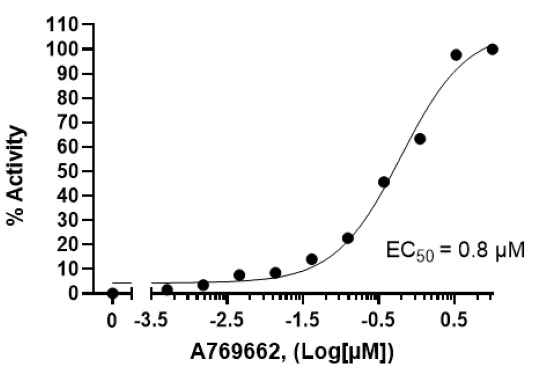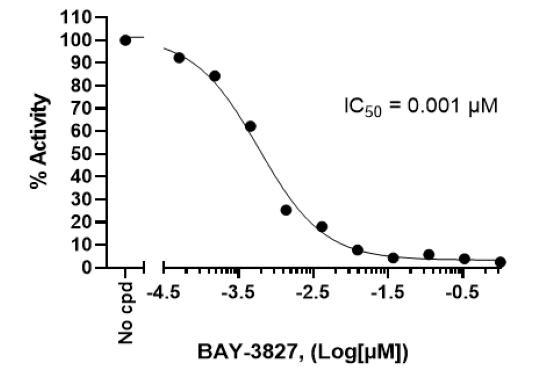Chemi-Verse™ AMPK (A1/B1/G1) Kinase Assay Kit
The Chemi-Verse™ AMPK (A1/B1/G1) Kinase Assay Kit is designed to measure AMPK ((AMP-activated protein kinase) (A1/B1/G1)) kinase activity for screening and profiling applications using ADP-Glo™ as a detection reagent. The assay kit comes in a convenient 96-well format, with enough purified recombinant AMPK (A1/B1/G1) kinase, kinase substrate, ATP, and kinase assay buffer for 100 enzyme reactions.
- ADP-Glo™ Kinase Assay (Promega #V6930)
- DTT (Dithiothreitol), 1M, optional
- Microplate reader capable of reading luminescence
- Adjustable micropipettor and sterile tips
- 30°C incubator
| Catalog # | Name | Amount | Storage |
| 40025 | AMPK (A1/B1/G1), His-Tag* | 10 µg | -80°C |
| 79334 | 5x Kinase Buffer 1 | 1.5 ml | -20°C |
| 79686 | 500 µM ATP | 50 µl | -20°C |
| 79496 | 5 mM AMP | 50 µl | -80°C |
| AMARA peptide (1 mg/ml) | 250 µl | -20°C | |
| 79696 | White 96-well plate | 1 | Room Temp |
*The concentration of the protein is lot-specific and will be indicated on the tube.
AMPK, or 5’ AMP-activated protein kinase, is a heterotrimeric protein complex of α, β and γ subunits, which have specific roles. AMPK is ubiquitously expressed, playing a crucial role in the liver, brain and skeletal muscle. It is involved in the regulation of cellular energy by sensing the ratio AMP(ADP)/ATP in the cell. AMP binding to the γ subunit causes a conformational change, leading to the phosphorylation of threonine residues in the α subunits by AMPK kinase. This activation of AMPK leads to phosphorylation of proteins like ACC1 (acetyl-CoA carboxylase), SREBP1c (sterol regulatory element-binding protein 1c) or TBC1D1 (Rab-GTPase activating protein) and results in fatty acid oxidation, glucose update, lipogenesis, triglyceride and cholesterol synthesis and insulin secretion. Once the balance in the cells shifts from AMP to ATP, ATP dislodges AMP from AMPK and the protein becomes inactivated. The dysfunction of AMPK is involved in diabetes, obesity and NASH (nonalcoholic steatohepatitis). Its role in cancer, however, is controversial. It has been implicated in tumor suppression, as knockout models presented a tendency to develop lymphoma, but also in tumor promotion as in the absence of AMPK cancer cells became more prone to glucose starvation. Further studies are necessary for a full understanding of AMPK role in disease, and how to best modulate its activity.
Steinberg G. and Hardie D., 2023 Nature Reviews Molecular Cell Biology 24: 255(273)



